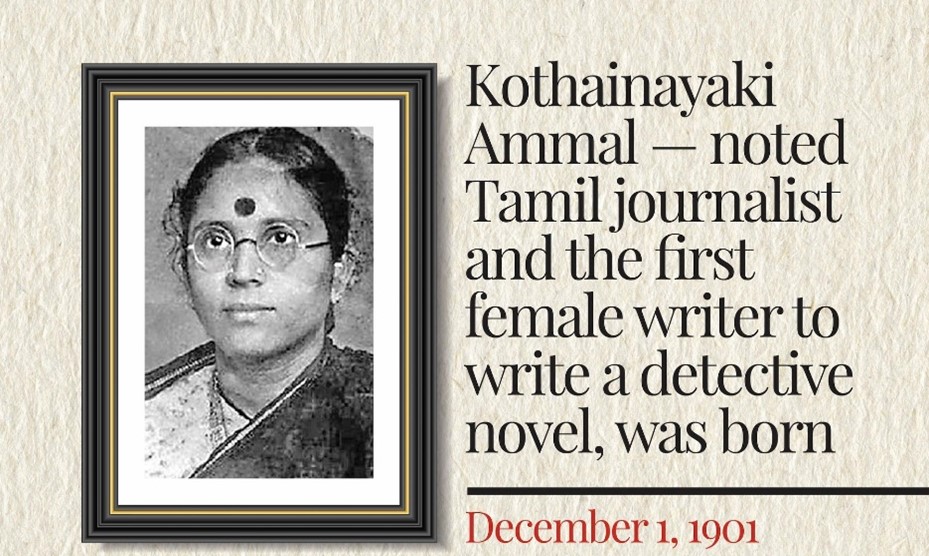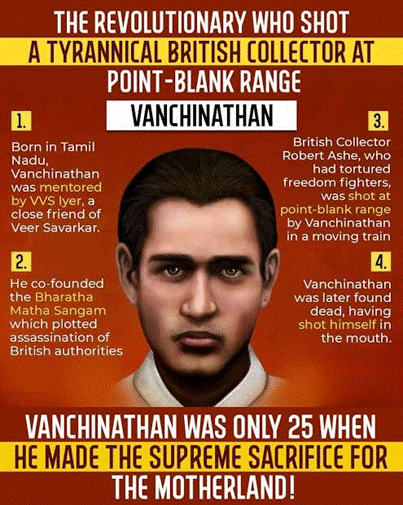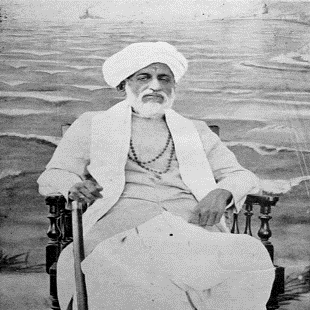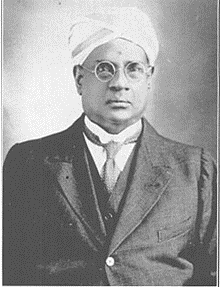PREVIOUS
Freedom Fighters from Tamilnadu – 17
Freedom Fighters from Tamilnadu – 17
(For English version to this please click here)
90. Vai. Mu. Kothainayaki Ammal
Early Life and Background:
- She was born on 1 December 1901 in Nirvalur, British India, to N. S. Venkatachary and Pattammal.
Education and Early Influences:
- She had no formal schooling and could neither read nor write at the time of her marriage.
- Later, she had learned Telugu from her mother-in-law and picked up Tamil by singing Thiruvaimozhi verses.
- Her early interests flourished as she became proficient in Tamil through storytelling and exposure to dramas.
- Parthasarathy supported her education and encouraged her literary pursuits, fostering her love for literature.
Literary Career:
- Early Works: She started with her first play, Indira Mohana (1924), published by Noble Press, which received positive reviews.
Major Contributions:
- She authored 115 books and published the monthly Tamil magazine ‘Jaganmohini’.
- Notably, she was the first female Tamil writer to pen a detective novel.
- Her notable works include plays such as ‘Arunodhyam’, ‘Vatsa Kumar’, and ‘Dayanidhi’.
- In 1925, she became the editor of ‘Jaganmohini’.
- Where she introduced significant changes and published contemporary works, greatly increasing the magazine's popularity.
Public Speaking and Music:
- She was known for her engaging public speaking, captivating audiences at political meetings by incorporating stories into her speeches.
- Active as a speaker for the Congress Party, she inspired many with her eloquence.
- In addition to her oratory skills, she was talented in classical Carnatic music, singing patriotic songs at Congress meetings and for All India Radio.
- She encouraged D. K. Pattammal and earned admiration from Mahakavi Bharathiar.
- She also composed classical music, with some of her works included in the book ‘Isai Margam’.
Freedom Struggle and Social Activism:
- She met Mahatma Gandhi and Kasturbhai in 1925, which inspired her to embrace a life of simplicity and adopt khadi clothing.
- In 1931, she participated in the Satyagraha agitation, resulting in an eight-month prison sentence.
- Her activism continued when she was arrested in 1932 for her involvement in the agitation against the Lodhi Commission and the boycott of foreign clothes.
- During her imprisonment, she also wrote novels that reflected the experiences of her fellow prisoners.
- After Gandhi's assassination, she founded the Mahatmaji Seva Sangam to support poor and orphaned children.
- She also donated ten acres of land awarded to her by the government to Sri Vinoba Bhave's Bhoodan Movement.
Film Industry:
- She served as a member of the Film Censor Board for ten years, working diligently to ensure that censored scenes were not reintroduced into films.
- Several of her novels were adapted into movies, including Anadhai Penn, Chiththi, Rajmohan, and Nalinasekaran.
- Posthumously, she was honored with the Award for Best Cinema Story Writer for some of these adaptations, recognizing her significant contributions to both literature and film.
Public and Social Service:
- She was skilled in midwifery, providing free services to women of all castes and creeds.
- In recognition of her public service, the government awarded her ten acres of land, which she generously donated to Vinoba Bhave’s Bhoodan Movement.
Death:
- She passed away on 20 February 1960.

91. Vanchinatha Iyer (Sankara Iyer)
Early Life and Background:
- Birthplace: Shenkottai, Tamil Nadu
- Family: He was son of Shri Raghupathy Iyer.
- Education: He attended school up to the primary level.
- Occupation: He joined the Forest Department after his schooling.
Revolutionary Activities:
- He actively involved in revolutionary activities against British colonial rule in India.
Key Event:
- Assassination of Robert Ashe: On 17 June 1911, at the age of 25, Vanchinatha Iyer assassinated Robert Ashe, the District Collector of Tirunelveli, also known as Collector Dorai.
- Ashe was shot at Maniyachi Station while enroute to Madras.
- Aftermath: Following the assassination, Vanchinatha Iyer committed suicide.
Associates and Organization:
- Nilakanta Brahmachari, who recruited revolutionaries across the Madras Presidency planned attacks against British officials.
- Connections: Shankar Krishna Iyer, Vanchinatha's brother-in-law, was instrumental in introducing Vanchinatha to Nilakanta Brahmachari.
- Organization: Along with Nilakanta Brahmachari, Shankar Krishna Iyer, and other associates, Vanchinatha Iyer helped found the Bharatha Matha Sangam.
- This organization was responsible for plotting the assassination of key British figures.
Legacy:
- Vanchi Maniyachi Station: The railway station where the assassination took place has been renamed Vanchi Maniyachi in his honor.

92. S. Subramania Iyer
Early Life and Background:
- Born: Madurai, Tamil Nadu
Career and Contributions:
- Profession: Lawyer, jurist, and freedom fighter
- Chief Justice: Subramania Iyer was the first Indian to serve as the Chief Justice of the Madras High Court.
- Knighthood: He was knighted in 1900 in recognition of his legal and public service contributions.
Indian National Congress (INC):
- Subramania Iyer was one of the founding members of the INC and played a significant role in the party’s activities.
- Peasant Rights Advocate: As Chairman of the INC’s 1914 Madras session, he highlighted the importance of village panchayats and advocated for ryot (peasant) relief funds.
Swadeshi Movement:
- Subramania Iyer was a strong supporter of the Swadeshi movement, which aimed at promoting indigenous industries and self-sufficiency.
Home Rule League:
- In 1916, Subramania Iyer and Annie Besant founded the Home Rule League, with this he serving as its honorary President.
- Letter to U.S. President: In 1917, Subramania Iyer wrote a letter to U.S. President Woodrow Wilson outlining the oppression and misrule in India.
- This letter prompted a detailed discussion in the British Parliament and led to a personal rebuke from Viceroy Chelmsford.
- Renunciation of Knighthood: In response to the insult from the Viceroy, Subramania Iyer renounced his knighthood, declaring it as an impediment to his “legitimate exercise of his civic rights.”
Death
- Subramania Iyer passed away in 1924.

93. Sir Pazhamaneri Sundaram Sivaswami Iyer
Early Life and Background:
- Sir Pazhamaneri Sundaram Sivaswami Iyer was born on 7 February 1864 in Palamaneri, Tanjore, Madras Presidency.
- He was a distinguished lawyer, administrator, and politician.
Education and Early Career:
- He attended the S. P. G. Branch School and Manambuchavadi High School for his schooling.
- He pursued higher education at Government Arts College in Kumbakonam.
- He graduated from Presidency College, Madras, in January 1882 in Sanskrit and History.
- He then studied law at Madras Law College.
- He set up his legal practice in 1885.
Career in Law and Administration:
- Sivaswami Iyer served as Advocate-General of the Madras Presidency from 1907 to 1911.
- He was a member of the Executive Council of the Governor of Madras from 1911 to 1917.
- He served as Vice-Chancellor of Madras University from 1916 to 1918.
- Later, he became Vice-Chancellor of Banaras Hindu University from 13 April 1918 to 8 May 1919.
- He was a member of the Council of State (India) from 1922 to 1923.
Political and Public Service:
- Sivaswami Iyer was a founding member of the Indian National Congress (INC).
- He played an instrumental role in its activities.
- He supported the Home Rule Movement alongside Annie Besant.
- He served as an Indian delegate to the League of Nations in 1922, where he condemned the mandate policy of General Smuts of South Africa.
- He criticized the Simon Commission upon its arrival in India.
- He was a member of the Indian Military College Committee in 1931, advocating for an indigenous military academy.
Notable Contributions and Legacy:
- Sivaswami Iyer addressed critical issues like village panchayats and ryot relief funds during his tenure with the INC.
- He promoted indigenous industries and self-sufficiency through the Swadeshi Movement.
- He strongly condemned the Jallianwala Bagh Massacre in 1919.
- He also supported reforms for women's education.
Honours:
- Sivaswami Iyer received a Companion of the Order of the Indian Empire in 1908.
- He got a Companion of the Order of the Star of India in 1912.
- He received Knight Commander of the Order of the Star of India in 1915.
Published Works:
- Sivaswami Iyer published works include ‘Martial Law Administration in the Panjab’ (1919) and ‘The Simon Commission Report Examined’ (1930).
- He co-authored ‘Five Laws of Library Science’ (1931) with S. R. Ranganathan and W. C. Berwick Sayers.
- He also co-authored ‘Lord Hastings and the Indian States: A Study of the Relations of the British Government in India with the Indian States 1813-1823’ (1930) with Mohan Singh Mehta.
- His work ‘Evolution of Hindu Moral Ideals’ was published in 1935.
Legacy:
- In his memory, the Lady Sivaswami Iyer Girls School was named after him.
Death
- Sir Pazhamaneri Sundaram Sivaswami Iyer passed away on 5 November 1946.

-------------------------------------


